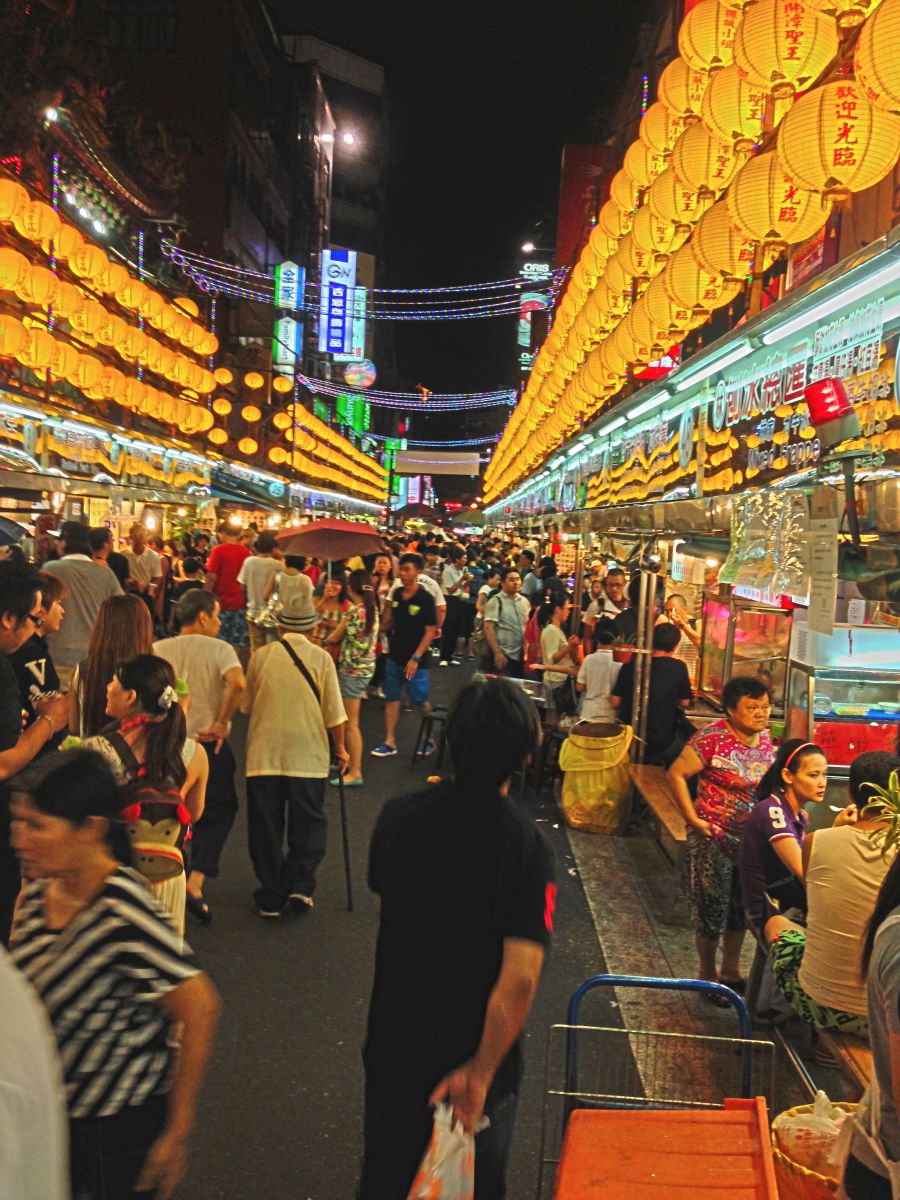Walking down a brightly-lit alley in central Taipei, plump, juicy mangoes, tangy pineapples and earthy watermelons immediately catch the eye. Next to them, a stall selling oyster omelettes and guangbao - steamed bun sandwiches filled with hearty chunks of braised pork belly, pickled Chinese cabbage and powdered peanuts – entice with an alluring whiff of meat, seafood, and griddle-cooked vegetables, making it impossible not to succumb to temptation. And why shouldn’t we? We are in Shilin Market, one of the island’s most famous night markets, and food – mouth-watering, colorful, decadent food – is everywhere.
This, we’re soon to find out, is a recurring feature of Taipei.
It’s hard to walk more than a few paces down the street without being lured by peddlers carrying delectable snacks, unremarkable eateries offering bowlfuls of chewy noodles and restaurants promising – and delivering – tales of palatable eats we will recount long after our visit.
Bewildering in their range of dishes, night markets should be on anyone’s must-do list when traveling to the city. Wandering is a pastime that suits Taipei well, and these culinary hubs are perfect places to do just that, with their maze-like alleyways, vibrant stalls and makeshift tables, each selling different xiao chi (small eats).
An inclination for adventure is essential; the island’s food is a mash-up of aboriginal, Hakka and Min cuisine with a bias towards the refined cooking of Shanghai and eastern China, meaning flavors are bold, diverse and often unexpected. Snacks like stinky tofu, pigs’ blood rice pudding, and ribs steamed in medicinal herbs are regular features of any street market – unappetizing as they may sound, they actually make for some excellent stomach-fillers.
Besides the metropolis’ main landmarks – Chiang Kai-shek Memorial Hall, Longshan Temple and Taipei 101 – it’s easy to make market-hopping the main purpose of a trip. Raohe, one of the oldest night markets in Taipei and our next destination after Shilin, has one of the best food selections around. Here we indulge on salt-crusted kebabs and pressed-to-order sugarcane nectar, finishing off our tour with two remarkably large portions of “mango avalanche” and “strawberry blizzard” – piles of shaved ice heaped with juicy fruit, flavorings and condensed milk that take the edge off the tropical heat. Huaxi is a more bizarre experience, with food items like snake – served plain or in soup – on offer alongside a good number of sex toys and dubious DVDs.
For a better insight into Taiwan’s local culinary style, a visit to Ningxia night market is also mandatory. Moseying lazily from one stall to the next, we munch on moreish pan-fried pork buns and a delightfully oily egg-and-flour-based pancake showered with shallots, glossy strips of seasoned bok choy and fried pork slithers, handed to us fresh from the griddle. Washing it all down with some good old bubble tea – Taiwan’s ubiquitous drink – it’s not long before our quest for yet more delicacies resumes.
Signs for niu rou mian – the island’s ultimate comfort food – are easy to spot, even for the Mandarin-illiterate. A bowl of it can be obtained at virtually any restaurant around town. Try the first international chain to introduce upmarket Taiwanese folk cooking, Shin Yeh. It does delicious
renditions of this staple dish without the rough edges of the night markets; the final result being a balanced affair of thick noodles nestled in a dark, spicy broth and topped with heaps of beef shanks, assorted vegetables and pickled greens.
Similarly, ba-wan and their delicious fillings of pork and veggies can be found at most food courts, where you’re allowed to pile up as much food on your tray as you like, with each dish incurring a fairly small charge. The court under Taipei 101 is the biggest and busiest; take a seat on one of the fixed metal tables and soak in the boisterous atmosphere as a motley assortment of Taipei’s locals stop in for a tea, a chat and a snack.
Ay-chung Mee Suah, not far from Huaxi night market, is a perfect stop to taste oya misua. The small restaurant only serves this dish in two sizes: small and large. Vermicelli floats in a thickened soup with oysters and pig intestines, topped with a dash of cilantro and finished off with a swig of black vinegar and some minced garlic. Perfection.
Taiwanese cuisine is also heavily influenced by Japanese and fusion cooking. Japan occupied Taiwan for 50 years during the first half of the 20th century and its legacy left a mark on the nation’s taste buds. Our last meal in the city is at the Addiction Aquatic Development, Taipei’s former fish market and now a chic warehouse space with a standing sushi bar and Japanese grill. The menu is overwhelming, the quality of the seafood on par with Tokyo or Kyoto.
Sated yet foraging for one last bite after our dinner of raw fish and saké, a walk down a nearby night market unveils more dumplings, sweet treats and soupy concoctions. Resistance is pointless. If there’s one thing we’ve learned from this trip, that would be it. And a piece of advice: come hungry.













